18
Jan, 2016
STROKE RECOVERY WITH PHYSICAL THERAPY
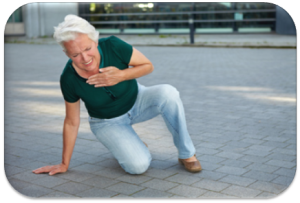
A stroke occurs when a clot blocks blood flow to an area of the brain, resulting in death of brain cells and damage to the brain. This can result in a variety of symptoms. These can range from weakness and altered sensation to paralysis and complete loss of sensation.
While traditional medicine helps in the immediate management of patients and prevents further injury, the best way for a patient to regain independence and quality of life is progressive, supervised exercise under the guidance of a licensed physical therapist.
Why Physical Therapy?
Physical therapists can help a stroke patient to learn or restore movement patterns essential for day-to-day activities. In addition to motion, a therapist can help improve muscle control, regain balance and stability and boost confidence. A therapist will also help a stroke patient avoid exercises and activities that can be potentially harmful, while creating a safe home environment conducive to rapid recovery.
A New Beginning – New Movement Patterns
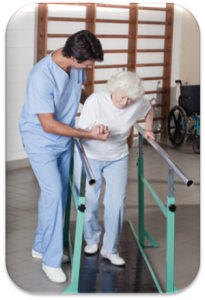
A stroke is almost like a bolt of lightning to the nervous system. The effects are difficult to predict. The objective with physical therapy is to make the most out of the given situation, and focus on the basics of motion, strength, balance and environmental awareness. A stroke can forever alter the patient physically and emotionally. Physical therapy plays a critical role in recovery by facilitating:
1 – The programming of new movement patterns – Physical therapists will encourage patients to perform both active and passive movements with the upper and lower extremities. This will help the patient regain independence, starting with simple tasks like sitting upright in bed, and getting out of bed independently. These are essential aspects of a happy, healthy and independent life.
2 – The importance of environmental awareness – Simple measures such as stroking the skin or tapping the joints can help regaining awareness of the senses. Orientation between the body and surrounding objects is often impacted.
3 – Continued rehearsal at home – A home exercise program involves repetition and self-training for the patient. In most cases, support from a family member goes a long way for the patient
The Freedom Everyone Deserves…
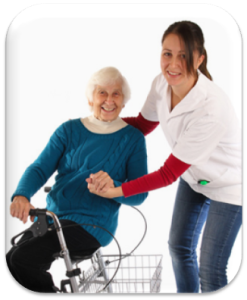
There are things that some of us take for granted in life. It’s part of the fabric of human nature. A stroke can rob an individual of fundamental things like muscle control, sensation and balance and shatter the patient’s lifestyle. Physical therapists help patients to cope with the aftermath of the neurological impact of a stroke. They provide the patient (and the family) with the tools (and the courage) needed for recovery.
If you or someone you know has any movement problems, then don’t hesitate to contact us. As your chosen experts of movement and function, we appreciate the opportunity to serve you.
You’ll be amazed with what physical therapy can do for you. Regular sessions with a therapist can help every individual live life to the fullest. Don’t let a stroke (or any limitation) hold you back. Reach out to us. We will help you get the freedom you deserve by helping you get rid of pain and limited motion.
Posted in Uncategorized by .
5
Aug, 2015
What I Have Learned From Marathon Training…
In preparing for my 6th marathon which I will be running at the end of the month, I have stubbornly come to realize a few things which should have been obvious to a health professional such as myself. It is with a bit of embarrassment that I am sharing this information with you!
While many of the items on this list will seem very obvious, it doesn’t really hit home until you personally experience the side-effects of not following “the rules.” So without further ado I present to you Brian Paul’s Obvious Tips for Successful Marathon Training…
1. Get Enough Sleep – I can’t emphasize this one enough. With a family of eight to care for and 2 physical therapy clinics to run, extra time is not a luxury that I am afforded! In trying to do everything I need to do, I am oftentimes awake well past 1 AM and then trying to wake up at 6 AM to do my training runs. The National Sleep Institute recommends a minimum of 7 hours of sleep per night in order for your body to function optimally.
While I understand the benefits of a good nights sleep, I never really felt that it would affect my performance. Boy was I wrong. All year I have been complaining to my wife that I feel like I am running in mud. I figured that much of my sluggishness was due to the fact that I would start running about 10 minutes after I got out of bed in the morning. She had been telling me all along that I wasn’t getting enough sleep. Eventually I decided to listen to her and started going to sleep earlier and let me tell you it has made a tremendous difference. Those early morning runs have gotten much easier and I have had a lot more energy.
2. Stay Well Hydrated – This is another obvious one that you don’t realize how detrimental the effects of lack of hydration are until you have dehydrated during a run. Many times I have gone out on a run and either forgot to bring along a drink or didn’t drink enough beforehand. After a few miles you begin to experience the feelings of dehydration – nausea, lack of energy, headache, etc.
The problem with dehydration is that once you have experienced the effects of dehydration it is usually too late to reverse the effects. I have personally felt the effects of dehydration for hours and sometimes days after not properly hydrating during a run. I recommend wearing a hydration pack or putting out drinks along the course you are running for any run longer than 6 miles.
3. Change Your Shoes – While I recognize that everyone is in a different position financially it is still very important to change your shoes every few hundred miles. The negative effects of wearing worn out shoes can be disastrous for your training and more importantly for your legs in general. I realized a few weeks ago that I have been running with the same sneakers since last spring which probably equals well over 1,000 miles. This is way too many miles. I felt the difference in my running, as I constantly felt like I wasn’t running at my best, and I felt the difference in my legs, as my knees and ankles were always achy.
After switching sneakers I feel much lighter on my feet and I haven’t experienced the achy pains in my legs. I realize that these may seem like obvious suggestions, but I have finally come to the realization that I am no longer 20 years old, and can’t just roll out of bed and perform at my best. As I get closer and closer to 40 I have to listen to and take care of my body if I am going to continue training for and running marathons. Lets hope these changes that I have made help me have success at the Buffalo Marathon on May 25th!
Posted in Uncategorized by .
5
Aug, 2015
Work Conditioning
Work Conditioning is an exercise-based program developed for workers, which equal the pursuit of injured employee to the physical requirement of his/her job. For an individual’s conditioning program, it is designed to meet the worker’s job demands, which are recognized during the first assessment with the physiotherapist, established with the employer or the company and when available through a special study of a physical requirement analysis report.
Work conditioning is considered very important in our present society. The objective of work conditioning is to ensure that injured workers are safely returned to productive work in a sensible manner.
Education is a major component of this work conditioning program.
The Monmouth Rehab Professional Work Conditioning program was basically developed as the final phase in the rehabilitation process. The Work Conditioning program is a coordinated continuation to both acute and chronic rehabilitation programs. What we do in our Work Conditioning program is providing the strengthening, stabilizing and conditioning essential for work simulation and return-to-work.
Criteria for Work Conditioning/Work Hardening:
As earlier said, work conditioning program is the final stage of rehabilitation exercise. Certain criterial are important in work conditioning program, and they are important for optimum outcome. Patients will be measured eligible for the Work Conditioning program when all necessary acute and chronic rehabilitation objectives have been attained and the patient has regain its fitness, has a pain-free, and restriction-free range of motion.
In standard work conditioning, all possible improvement has been made in both the acute and chronic rehabilitation stage, yet left over pain and dysfunction does exist for which the therapist or physician requires additional treatment to ensure the worker is fully competent to return to work.
Patients who undergo work conditioning program have strong return-to-work goals and they should be able to prove a willingness to participate.
Advantages of work conditioning:
Work conditioning programs have some great benefits for both the worker and the employer. The benefits may not be fully compiled in this article, but few well recognized advantages are:
Aggressive, one-on-one conditioning program
Recognized physical requirement critical to the patient’s pre-injury job, which help to monitor whether a worker is healthy enough to return to work or not.
Assessment and forwarding of patient’s progress in biweekly basis to help the worker perform better at work.
Realistic and useful return-to-work objectives that address the patient’s specific needs.
Patients of different diagnoses can be efficiently treated through Monmouth Rehab Professional Work Conditioning program. Diagnoses include but are not limited to: fractures, low back pain, strains, post-surgical, sprains and other complaint resulting in a loss of minimum 6 weeks of work
At Monmouth Rehab Professionals, we help both workers and employers get the best by planning a standard work conditioning program and follow up assessment.
Posted in Uncategorized by .
5
Aug, 2015
Orthopedic Rehabilitation
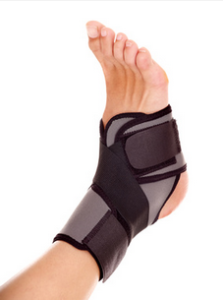 Orthopedic Rehabilitation concentrates on conditions related to musculoskeletal illness – bones, ligaments, muscles, and tendons. Orthopedic professionals diagnose, manage and treat injuries of the musculoskeletal and restore patients directly after orthopedic operations.
Orthopedic Rehabilitation concentrates on conditions related to musculoskeletal illness – bones, ligaments, muscles, and tendons. Orthopedic professionals diagnose, manage and treat injuries of the musculoskeletal and restore patients directly after orthopedic operations.
Orthopedic Rehabilitation is a form of treatment patients receive after orthopedic operations. It’s essential for individuals diagnosed with muscular and skeletal conditions. It is also very essential for restoring strength and motion to a patient who had suffered musculoskeletal injuries and undergone surgery.
At Monmouth Orthopedic Rehabilitation, we have dedicated rehab center in Jackson and Marlboro, NJ. Our goal is to help individuals regain proper recovery from all forms of skeletal and muscular injuries, illness and surgery.
We have years of experience and we are viewed as the region’s leading rehab provider. Nobody else in the range can give you the same level of mastery and experience that we can. Our treatment experts give a wide range of comprehensive rehabilitation therapy to orthopedic patients.
We work with our patients professionally to kick start their immense recovery in no time. We operate musculoskeletal therapy programs to ensure adequate physical fitness.
Our rehab programs are not only supported with skilled physicians, but also quality equipment facilities. Patients who suffer osteoporosis, osteoarthritis, and numerous sport related injuries can as well benefit from our intensive care.
Ours programs are available to people of all ages who have encountered injuries, surgery, and illness, that hindered their daily activities.
There are more serious orthopedic conditions such as; multiple bone fractures, and knee, hip and pelvis fractures. These conditions have lifetime consequences and may lead to disability. During rehabilitation, other affected areas of the body will be checked to ensure they function at their most extreme levels of capacity.
Your rehabilitation center is very essential as this would determine whether you’re ready to get back full fit or half fit.
Orthopedic Rehabilitation Professionals A specialize physicians will enlighten the patient professionally and show them the proper workouts put in place to restore and improve work and minimize the illness. Orthopedic physicians are instructed about surgical techniques and have the capacity to adjust and alter their insight to treat every individual patient. In addition, all our experts engage in in-depth research every now and then to enhance and improve our manners of caring, and providing quality treatment to our patients. Our outpatient clinical groups give precaution and rehabilitative care that boosts patient’s recovery. Individualized treatment are arranged to help attain each patient’s particular objectives. Visit us today and experience tremendous recovery from bone fracture, muscle strain, osteoarthritis, and all other musculoskeletal injuries.
Posted in Uncategorized by .
13
Jun, 2014
Where Does pain Come From
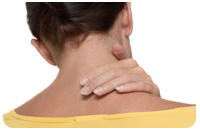 There are several causes of pain, and they can be related to the mind, the body or caused by general stress. We live in a stressful world, and the most common causes of pain are:
There are several causes of pain, and they can be related to the mind, the body or caused by general stress. We live in a stressful world, and the most common causes of pain are:
1) Strain associated with day to day life
We live in a world that is increasingly stressful. Strain associated with professional or personal pressure can force additional strain on your overloaded, weak muscles. We make it a priority to strengthen your muscles in a systematic, progressive manner so you can finally live the pain free life that you deserve.
 2) Anatomical problems associated with bones, discs
2) Anatomical problems associated with bones, discs
The wrong type of motion and lifting techniques can cause a breakdown of weak tissues. We teach you the best way to use your muscles and joint and enable you to move and function with optimum efficiency
3) Deterioration in joints
The gradual deterioration of joint integrity is an unfortunate effect of aging. Repeated motion associated with activities can cause muscle weakness and joint destruction, especially if an individual is overweight. We enable you to be become stronger and healthier, thereby minimizing the effects of joint deterioration.
13
Jun, 2014
What to Avoid
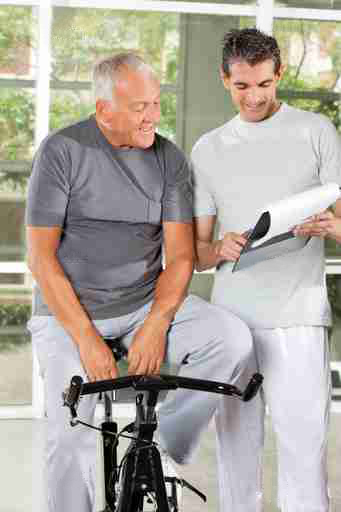 We pride ourselves in quality and commitment towards our patients. You want to avoid facilities that are run like factories and take their time to schedule you or treat you the right way. You also want to avoid facilities with outdated equipment and therapists with little or no experience.
We pride ourselves in quality and commitment towards our patients. You want to avoid facilities that are run like factories and take their time to schedule you or treat you the right way. You also want to avoid facilities with outdated equipment and therapists with little or no experience.
What sets us apart is our commitment to quality and reputation. We are known as the leading providers of physical therapy in our community and make every effort to uphold the highest standards in customer service. Our testimonials speak for themselves. We will provide you with personalized, individual care that you will not find in any other physical therapy facility, period.
13
Jun, 2014
What is Physical Therapy
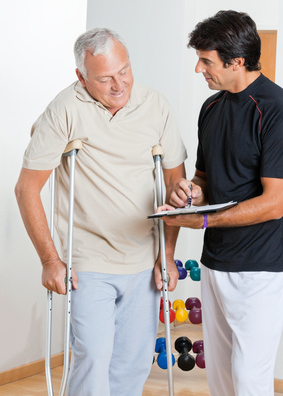 Physical therapists (PTs) are health care professionals who evaluate and treat individuals of all ages, from newborns to the elderly, who have medical problems or other health-related conditions that limit their ability to move and perform functional activities in their daily lives.
Physical therapists (PTs) are health care professionals who evaluate and treat individuals of all ages, from newborns to the elderly, who have medical problems or other health-related conditions that limit their ability to move and perform functional activities in their daily lives.
PTs examine each individual and develop a plan using treatment techniques to promote the ability to move, reduce pain, restore function, and prevent disability. In addition, PTs work with individuals to prevent the loss of mobility before it occurs by developing fitness- and wellness-oriented programs for healthier and more active lifestyles.
Physical therapists provide care for people in a variety of settings, including hospitals, private practices, outpatient clinics, home health agencies, schools, sports and fitness facilities, work settings, and nursing homes. State licensure is required in each state in which a physical therapist practices.
The physical therapist as the person who helps patients function better and feel more confident. The Physical therapist is:
- Known as: Coach/Teacher
- Delivers: Knowledge
- Offers: Independence
- Focus: Understanding
- Traits: Experts, advisers
13
Jun, 2014
Healthy Lifestyle
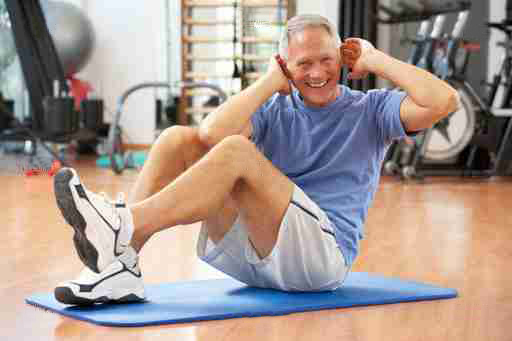
Self Help Tips For a Pain-Free Life
Never push yourself past your own limit Remember, each one of us has a certain limit. Always judge your limits, instinctively on a scale of 1 to 10. For example, 1 is relaxing on a Saturday reading the newspaper. 5 is carrying groceries. 8 is carrying groceries and walking up the stairs at a fast pace, while you are out of breath and 10 is 10 is a maximum effort, where your heart races faster than ever before. As a general rule, never push yourself to beyond 6-7, especially if you have a prior injury or are recovering from an injury. Always push yourself under the supervision of a licensed physical therapist at Monmouth Rehab Professionals. Be physically active, you must keep your bones, muscles and joints in a constant state of motion. Never resign yourself to the couch, or think that ‘exercise is not for me”. The best way to fight pain and recover from injury is to stay active and maintain your fitness level. Stretch and strengthen your muscles at least twice a week. Make sure your muscles are properly stretched and strengthened under the supervision of your physical therapist. It is common for aches and sprains to occur, as a direct result of muscles that are tight (inflexible) or weak.
